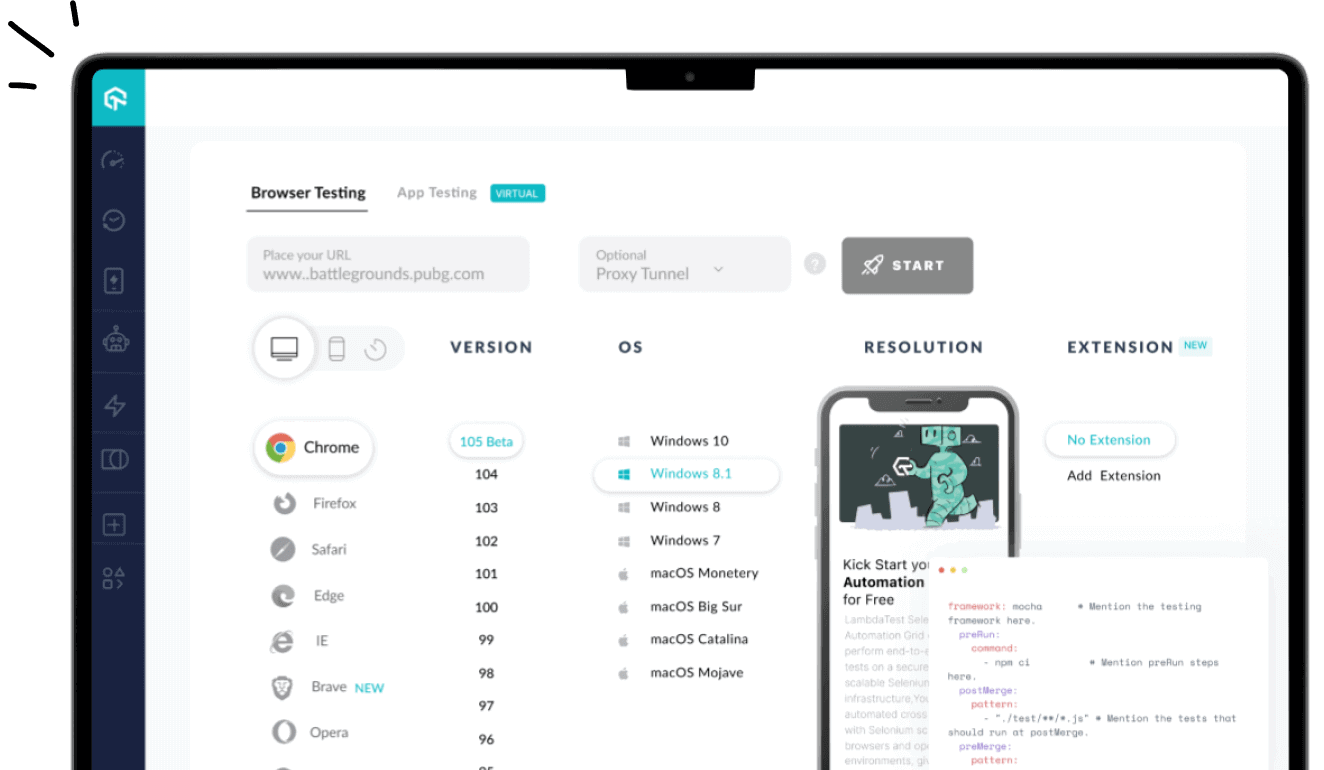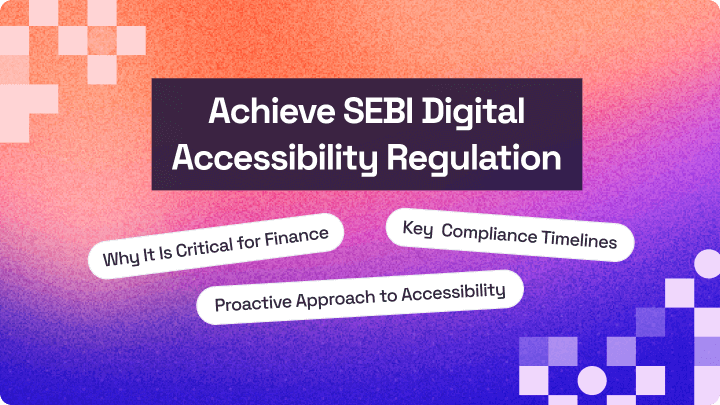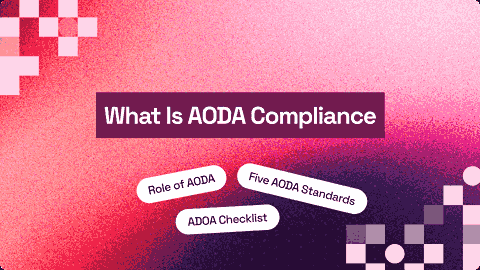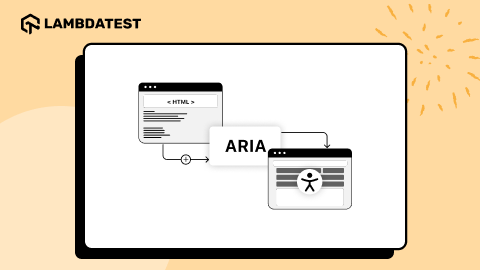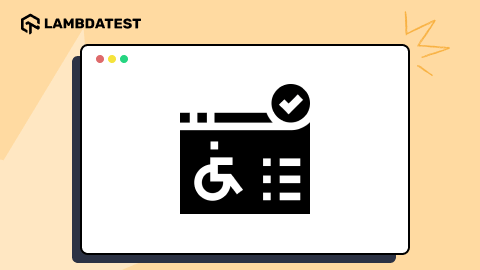A11Y Meaning Explained: A Guide To Digital Accessibility
Poornima Pandey
Posted On: September 29, 2025
12 Min
A11Y is the professional shorthand for “accessibility,” a term that refers to the practice of making digital products like websites and apps usable by everyone, regardless of ability.
If you work in tech or design, you’ve likely seen it and you know A11Y meaning, but it holds far more importance and goes far beyond being a simple buzzword.
So what is the true A11Y meaning, and why has it become a cornerstone of modern development? Let’s explore why A11Y is a fundamental principle for creating a more equitable and inclusive digital future.
Overview
A11Y Meaning, shorthand for accessibility, refers to the practice of designing digital products like websites and applications to be usable by everyone, regardless of ability. It ensures that all users, including those with visual, auditory, motor, or cognitive disabilities, can interact with and navigate digital content seamlessly.
What is A11Y Meaning?
Key details about A11Y Meaning:
- Definition: A11Y meaning is basically the shorthand for “accessibility,” ensuring digital content is usable by people with varying abilities.
- Origin: The term A11Y is a numeronym, where “11” represents the 11 letters between “A” and “Y.”
- Impact: A11Y improves the digital experience for everyone by fostering inclusivity and embracing human diversity.
Benefits of A11Y
Key details about the benefits of implementing accessibility:
- Broader User Base: Over 1 billion people live with disabilities, making accessibility essential to reaching a larger audience.
- Brand Trust: A commitment to accessibility builds brand loyalty, with studies showing 82% of users with disabilities are willing to spend more with accessible brands.
- Legal Compliance: Accessibility is a legal requirement in many regions, ensuring compliance helps avoid legal issues.
- Improved SEO: Accessible websites tend to rank better in search engines, as practices like clear headings and alt text improve searchability.
The POUR Framework
Key details about the POUR framework:
- Perceivable: Ensure all users can sense the information, with appropriate text descriptions and captions.
- Operable: Make sure the website is navigable using various input methods like keyboards or voice commands.
- Understandable: Content should be clear, simple, and easy to understand, with predictable navigation.
- Robust: Ensure compatibility with current and future technologies, ensuring the content is accessible across devices and platforms.
Challenges in A11Y
Key challenges in implementing A11Y:
- Outdated Technology: Making older websites accessible can be more complex than starting with new projects.
- Limited Resources: Without support, accessibility efforts can be delayed when resources are tight.
- Complex Applications: Modern, dynamic web applications often present unique challenges for accessibility.
- Integration from the Start: Overcoming these barriers requires integrating accessibility into the development process from the outset.
TABLE OF CONTENTS
- What Is A11Y Meaning? Decoding the Shorthand
- Why A11Y Is More Than a Buzzword
- Who Are We Building For?
- What Does Accessibility Mean for Business?
- What Are The Four Pillars of Accessibility?
- Putting A11Y into Practice: Where to Start
- Testing and Auditing
- Real-World Challenges of A11Y
- The Future is Accessible
- How LambdaTest Simplifies A11Y Meaning In Real World Testing?
- Conclusion
What Is A11Y Meaning? Decoding the Shorthand
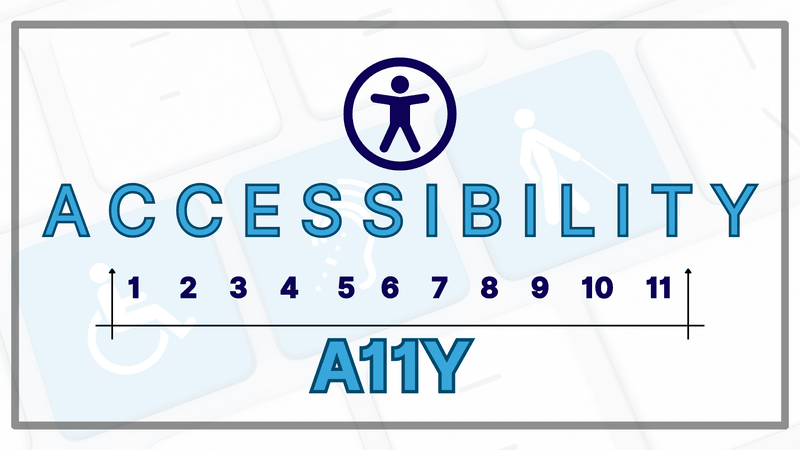
A11Y meaning is that, it is a friendly nickname for “accessibility.” It’s what’s called a numeronym, where the “11” simply stands for the eleven letters between the “A” and the “Y.” It’s a handy shortcut for a big idea.
While some pronounce it “A-eleven-Y,” many in the community lovingly call it “ally” which perfectly captures its spirit. It represents a promise to be an ally to every user, ensuring that our digital creations welcome people with visual, auditory, motor, or cognitive impairments.
Why A11Y Meaning Is More Than a Buzzword
True accessibility isn’t about ticking boxes on a legal checklist. It’s about people. It’s about recognizing that we all interact with the world differently and building technology that honors those differences.
Who Are We Building For?
When we embrace A11Y Meaning, we’re designing for our friends, family, and neighbors:
- For a person who is blind, it means a screen reader can describe your website’s images, turning a wall of silence into a vivid experience.
- For a person who is deaf or hard of hearing, it means captions bring your videos and podcasts to life.
- For a person with a motor impairment who can’t use a mouse, it means they can navigate your entire site with just a keyboard or their voice.
- For a person with a cognitive disability like dyslexia or ADHD, it means clear layouts and simple language make your content a pleasure to read, not a chore.
And here’s the good part: designing for disability benefits everyone. That’s the “curb-cut effect.” Just like curb cuts in sidewalks help people with strollers and skateboards as much as wheelchair users, features like captions and high-contrast text make life easier for all of us in different situations.
What Does Accessibility Mean for Business?
Creating accessible products isn’t just an act of kindness; it’s one of the smartest business decisions you can make.
- It Opens Doors to More People: The World Health Organization estimates over 1 billion people live with a disability. By building inclusively, you welcome a massive and incredibly loyal community to your brand.
- It Builds Trust for Your Brand: A commitment to inclusion shows you care. A study even found that 82% of users with disabilities would spend more money with a company that offers accessible online services.
- It Keeps You on the Right Side of the Law: Accessibility isn’t always optional. Laws like the Americans with Disabilities Act (ADA) require it, and getting it right helps you avoid legal trouble.
- It Boosts Your SEO: It turns out that Google loves accessible websites. Practices like using clear headings and adding image descriptions help search engines understand your content better, which can improve your ranking.
What Are The Four Pillars of Accessibility?
The Web Content Accessibility Guidelines (WCAG) give us a powerful model to follow, built on four simple principles: POUR. For a digital product to work for everyone, it must be:
1. Perceivable
Can everyone sense the information on your site? It can’t be invisible.
- Think of it this way: Writing a sign in invisible ink is useless. The same goes for an image without a text description for a screen reader, or a video without captions for someone who can’t hear.
2. Operable
Can everyone use and interact with your product?
- Think of it this way: A beautiful door is worthless if the knob is impossible for some people to turn. Your website needs to be fully usable with just a keyboard, giving everyone a universal key to every feature.
3. Understandable
Is your content and navigation clear and predictable?
- Think of it this way: Imagine getting a map without a legend or street names. Good accessibility means using plain language, providing clear instructions, and designing a consistent experience that never leaves users feeling lost.
4. Robust
Can your content be reliably interpreted by different devices and technologies, now and in the future?
- Think of it this way: You want to build your house on a solid foundation, not on sand. Using clean, standard code ensures your product works well with assistive technologies today and won’t break when new ones come along tomorrow.
Putting A11Y Meaning into Practice: Where to Start
You don’t have to be an expert to make a huge difference. Accessibility is a journey, and every step counts.
- Use Your Headings Wisely: Structure your page like an outline, using
<h1>for the main title,<h2>for sections, and so on. This creates a logical map for screen readers. - Make Your Links Descriptive: Instead of “Click Here,” use text that describes where the link goes, like “Read our 2023 annual report.”
- Check Your Colors: Ensure your text has enough contrast with its background so it’s easy for everyone to read. There are free online tools that make this simple.
- Write Helpful Alt Text: For every meaningful image, write a short, clear description of what it shows. It’s a small act that makes a world of difference.
Testing and Auditing
How do you know if you’re getting it right? You test. A good approach includes:
- Automated Tools: Services like Lighthouse and WAVE are great for a quick scan to catch common problems.
- Manual Testing: Try unplugging your mouse and navigating your site with only your keyboard. Or use a screen reader to hear your site aloud.
- Listen to Real People: The most valuable insights come from user testing with people with disabilities. Their feedback is pure gold.
Real-World Challenges of A11Y
Let’s be honest: while accessibility is vital, it’s not always easy. Teams often face real hurdles:
- Old Technology: Trying to make an old website accessible can feel like renovating a historic building. It’s often more complex than starting fresh.
- Limited Time and Budget: Without support from leadership, accessibility can be pushed to the back burner when deadlines are tight.
- The Knowledge Gap: Many of us were never taught accessibility in school. It requires a commitment to learning and a new way of thinking.
- Complex Apps: Modern, dynamic web apps create unique challenges that require more advanced skills to make them fully accessible.
- Relying Only on Bots: Automated tools are helpful, but they don’t catch everything. Human experience in testing is irreplacable.
Overcoming these challenges starts with seeing accessibility not as a final step, but as a core part of creating a high-quality product from day one.
LambdaTest Accessibility Testing suite allows you to ensure your website and mobile applications are accessible and inclusive.
The Future is Accessible
Now that we know the A11Y Meaning we must also understand that it is always evolving. Exciting advances in AI and accessibility, and global standards continue to improve, as they are being automated with artificial intelligence. By staying curious and committed, we can build a digital future that is born accessible.
AI and Machine Learning in Accessibility
AI is revolutionizing A11Y Meaning by offering smart solutions for automated testing and remediation. LambdaTest’s AI-native platforms like HyperExecute and KaneAI are leading the charge by automating accessibility checks and even generating solutions for accessibility barriers in real time.
Evolving Standards and Guidelines
Accessibility standards continue to evolve, with new guidelines being added to WCAG regularly. As the web becomes more complex, staying up-to-date with these guidelines is crucial for maintaining an accessible platform.
How LambdaTest Simplifies A11Y Meaning In Real World Testing?
LambdaTest Accessibility Testing suite enables you to ensure that your website and mobile applications are both accessible and inclusive.
Key Features:
- LambdaTest Accessibility DevTools Chrome Extension:This extension provides an easy way to perform thorough accessibility checks directly within the browser, helping you identify issues quickly.
- Manual Accessibility Testing: LambdaTest offers manual testing capabilities, including assistive tools like screen readers and speech viewers, available for both Windows and macOS.
- Accessibility Automation: With LambdaTest, you can automate accessibility testing using popular tools like Selenium, Playwright, and Cypress. This helps speed up your release cycles while ensuring accessibility compliance.
- Accessibility Scheduler: The Accessibility Scheduler feature allows you to automate and schedule recurring or one-time accessibility scans, reducing the manual effort involved in running these checks.
To get started with automated accessibility testing, refer to this Accessibility Automation documentation.
Conclusion
Understanding the A11Y meaning redefines the goal of software testing. It shifts our focus from a simple bug hunt to a quest for inclusivity. While automated tools are a great starting point, they only tell part of the story.
True quality assurance comes from human-centered testing, where we actively seek out the barriers that prevent people from using our products. For testers, this means moving beyond functional checks to championing the experience of every user. By putting accessibility at the core of our testing process, we don’t just ship more robust software; we build a more equitable digital world.
Frequently Asked Questions (FAQs)
What does A11Y Meaning and what does it stand for?
A11Y Meaning is that is a numeronym for “accessibility.” The “11” represents the eleven letters between the “A” and the “Y,” serving as a common shorthand in the tech industry.
Why is accessibility so important in digital products?
It ensures that everyone, including people with disabilities, can use your products. This promotes inclusivity, is often a legal requirement, and leads to a better user experience for all, which can expand your market and enhance your brand.
How can I start implementing A11Y Meaning in my projects?
Begin by learning the WCAG POUR principles. Focus on foundational practices like using semantic HTML, ensuring full keyboard accessibility, providing alt text for images, checking color contrast, and testing your work with automated tools and manual checks.
What are the WCAG guidelines?
The Web Content Accessibility Guidelines (WCAG) are the global benchmark for web accessibility. They provide a comprehensive set of technical standards to help designers and developers create accessible experiences for people with disabilities.
What are some common accessibility issues?
Common problems include poor color contrast, missing or unhelpful image alt text, elements that can’t be accessed with a keyboard, confusing navigation, and improper use of HTML tags.
How does accessibility affect SEO?
Many accessibility practices positively impact SEO. Search engines favor well-structured content with clear headings, descriptive alt text, and transcripts, as these features make content easier to index and understand.
What are ARIA roles, and how do they help with accessibility?
ARIA (Accessible Rich Internet Applications) roles are used to define the function of elements that may not be fully accessible by default. For example, the role=”button” helps identify clickable elements for screen readers.
How do I test the accessibility of my website?
You can test accessibility using tools like Lighthouse, WAVE, or axe, or by conducting manual testing with screen readers to ensure compliance with WCAG.
Is A11Y a legal requirement?
Yes, many countries have legal requirements for digital accessibility, such as the Americans with Disabilities Act (ADA) and the European Accessibility Act (EAA), which mandate that public-facing websites and services be accessible to people with disabilities.
Author

